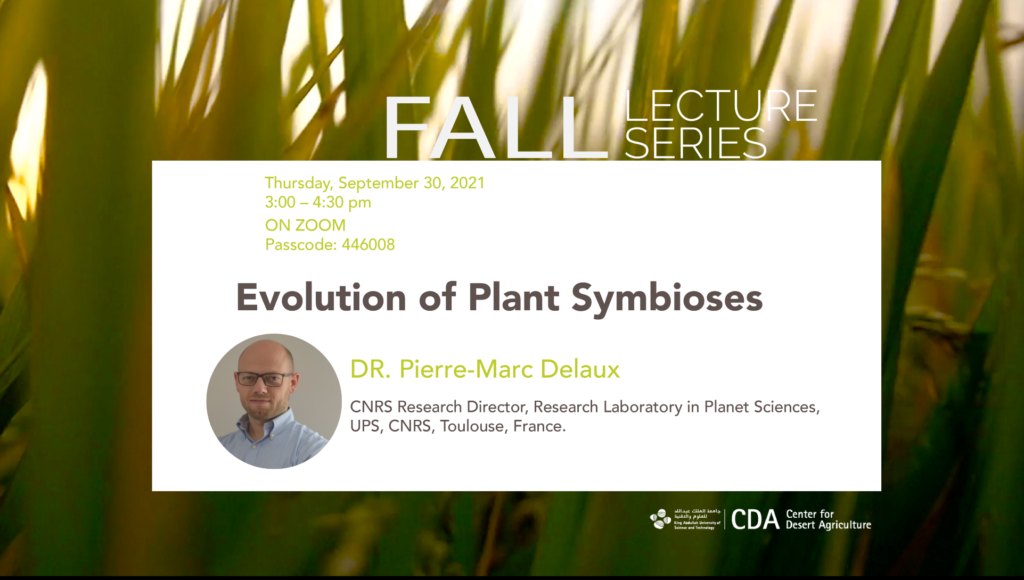
Thursday, September 30, 2021
3:00 – 4:30 p.m. (AST)
On Zoom
Passcode: 446008
Evolution of plant symbioses
By Pierre-Marc Delaux
CNRS Research Director, Research laboratory in plant sciences, UPS, CNRS, Toulouse, France.
Abstract
Mutualism between plants and microorganisms has been essential for the evolution of terrestrial ecosystems for millions of years. It has been proposed that even the colonization of lands by plants was facilitated by a mutualistic symbiosis formed with arbuscular mycorrhizal fungi. This symbiosis, by far the most widespread in land plants, results in the accommodation of the symbiotic fungus inside the plant cells. Following this initial symbiosis, multiple other intracellular symbioses have evolved in plants as diverse as orchids, Ericaceae such as cranberry, legumes or the Jungermanniales, a group of bryophytes. These symbioses provide numerous benefits, improving plant nutrient acquisition and fitness. Despite their absolute importance in terrestrial ecosystems, the molecular mechanisms underlying the origin and subsequent evolution of intracellular symbioses in plants remain poorly understood. Our research aims at understanding how these symbiotic associations evolved. Using combinations of phylogenomics, biochemistry and genetics in multiple plants we try to determine the molecular bases of the origin, conservation and diversification of these associations.
About the speaker
- 2011: Ph.D.from the University of Toulouse, under supervision of Pr. Guillaume Bécard
- 2011 – 2014: Postdoc University of Wisconsin – Madison, with Pr. Jean-Michel Ané
- 2014 – 2015: Postdoc John Innes Center, Norwich, UK, with Dr. Giles Oldroyd
- 2015: Hired as CNRS researcher and then CNRS research Director in 2020 and head of the “evolution of plant-microbe interaction” team.
- 2019: CNRS Bronze Medal recipient
- Co-PI of Bill & Melinda Gates-funded “Engineering of nitrogen symbiosis for Africa” project since 2017, PI ERC Consolidator (2021) “ORIGINS”.
Brought to you by the Center for Desert Agriculture
